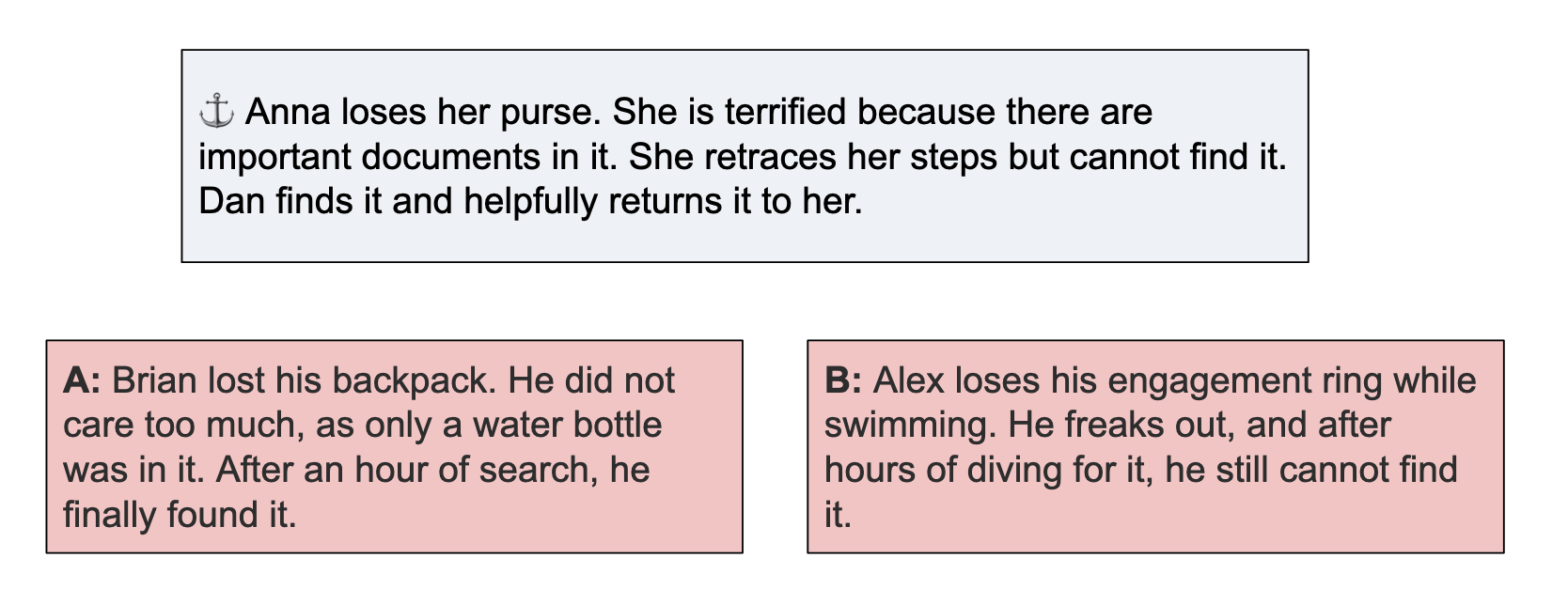In the shared task SemEval-2026 Task 4: Narrative Story Similarity and Narrative Representation Learning, you (or rather your systems) are asked to identify narratively similar stories. We define Narrative similarity by three core similarity components: the abstract theme, the course of action, and the outcomes of a story.
In simple terms, the aspects can be described as follows:
- Abstract Theme: The ideas and motives of the story.
- Course of Action: The sequence of central events, turning points, etc.
- Outcomes: The results of a story.
For a detailed definition, check out our annotation guidelines! For details on the exact task setup, check out the task details.
Example
This sample illustrates the similarity judgments required for our task. The actual tasks contain story summaries from Wikipedia. Which option, A or B, is more narratively similar to the anchor story?

Click below to reveal the answer:
Reveal Answer
In the above example, story A is considered more similar. A, B, and the anchor all tell the story of a lost item that is retrieved. In the case of A, it is found by a third party (as it is in the anchor), while in B it is not found at all.All Submissions Are Welcome!
While we appreciate all submissions, we want to encourage the submission of symbolic representation-based systems. Can any story grammar, narrative graph, or schema be used to represent a story for similarity judgements? We would like to know! As we expect symbolic systems to have a harder time exploiting biases in our data, we will maintain separate rankings for symbolic submissions.
Contact
Please stay up to date by following us on Bluesky and joining our mailing list. If you have any questions directed at the organizers, you can reach us here.
Organizers
- Hans Ole Hatzel, University of Hamburg
- Ekaterina Artemova, Toloka AI
- Haimo Stiemer, Technical University of Darmstadt
- Evelyn Gius, Technical University of Darmstadt
- Chris Biemann, University of Hamburg
Acknowledgments
Thank you to Toloka AI for providing annotation resources. The work is supported by the German Research Foundation (DFG) under grant BI 1544/11-2 and GI 1105/3-2 as part of the project ‘‘Unitizing Plot to Advance Analysis of Narrative Structure (PLANS)’’.